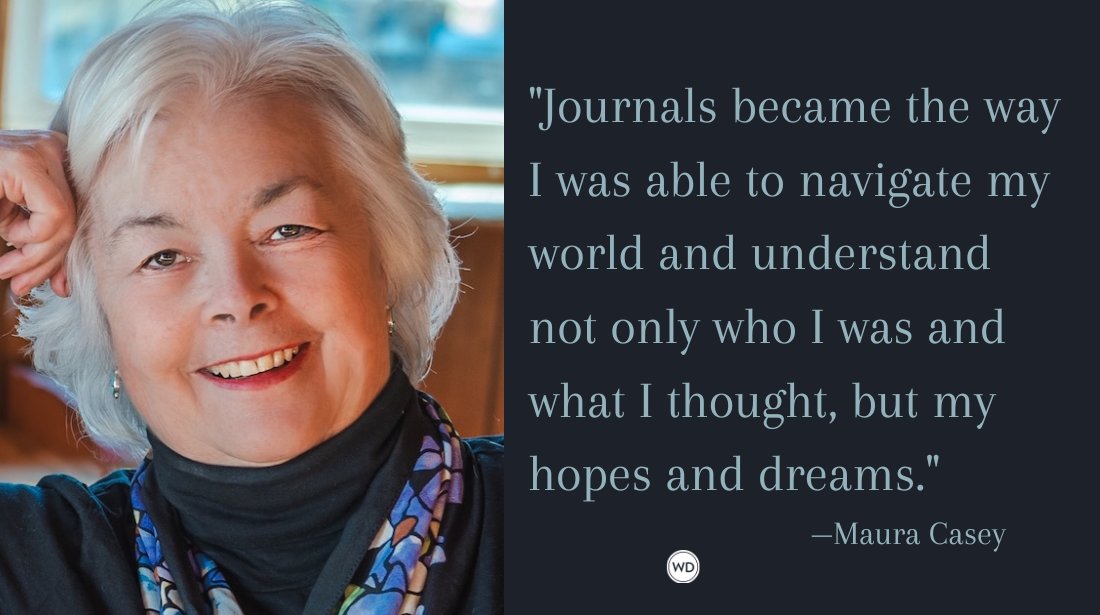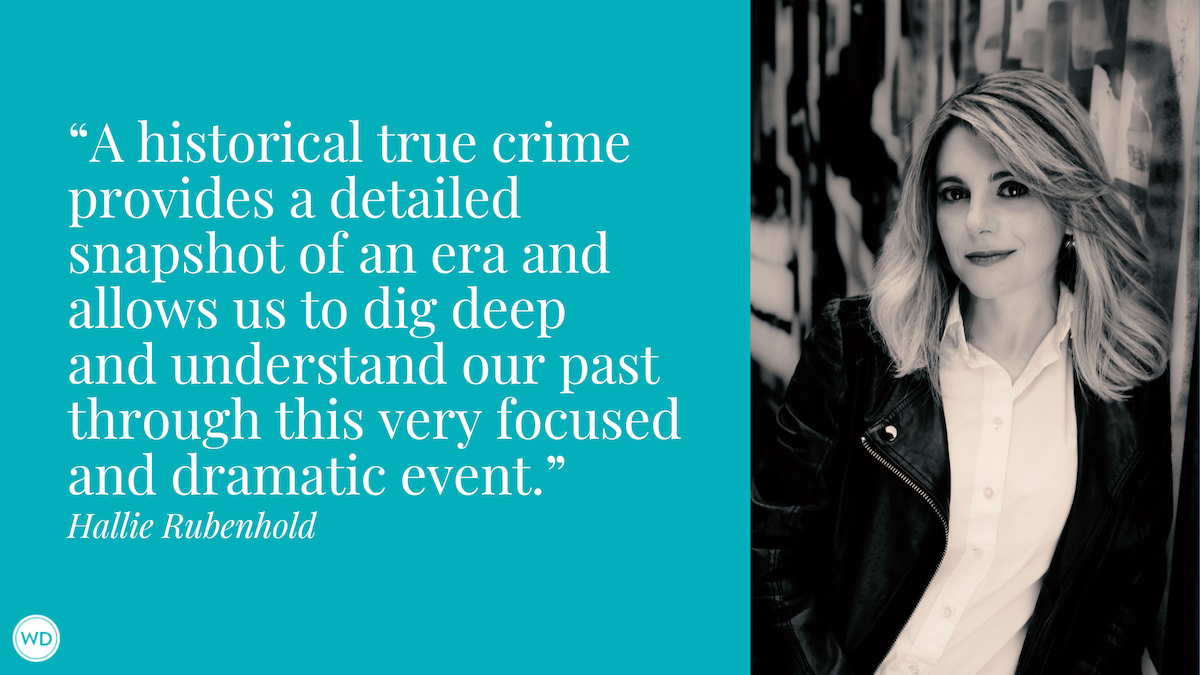Enough Backstory, On With the Action!
Condense and time the delivery of a character’s history to intensify your reader’s interest in your nonfiction story.
In Hollywood-speak, a character's "backstory" is what happened before he or she leaped onto the silver screen. This backstory is seldom revealed in an extensive flashback—at least not in the movies. Given the 120-minute universe of cinematic storytelling, the essential background on a character's life might be delivered in a single line of dialogue, barked out between gunfights.
So, if you were the screenwriter for a thriller about rampaging alligators, for example, you'd need to explain why your protagonist, "Gator" Hawkins, dedicated his life to turning alligators into shoes. You might place that burden on a secondary character, Gator's trusty sidekick, who confides to the hero's potential love interest, "Gator's never been the same since he was 7 years old and saw one of those monsters gobble up his pet poodle."
A nonfiction character has a backstory, too, of course—a whole lifetime's worth. For the nonfiction writer, the challenge isn't making up enough background to create a plausible character; it's selecting the handful of facts from years of real-life events that are necessary to paint a person on the page. You can easily get lost in your character's backstory and thereby lose the readers' interest in your main story, which should be the real focus of attention.
If you're writing a 1,000-word profile, one or two sentences may suffice to bring readers up to speed on your subject's life up to now. Your emphasis will be on the life history most directly relevant to what makes your subject profile-worthy today. Your article about an award-winning teacher, for instance, might sum up her backstory in that context: "An educator for 25 years, Smith grew up in the projects of Chicago and credits her own second-grade teacher with inspiring her to get an education and become a teacher." In a short piece, you don't need much more background than a Hollywood screenwriter does.
Start with the good stuff
In longer articles and especially in book-length nonfiction, your readers expect not just the here-and-now but also how your characters got to this point. It might seem logical to serve up this backstory right at the beginning, in chronological order, particularly if you're writing a memoir or biography.
But it's asking a lot of readers to wade through your character's entire childhood before they've learned why they should care about this person. If you're writing a story about someone famous, you can get away with that—they would have built up enough fame and/or infamy to intrigue readers through hundreds of pages of childhood. But you may not want to introduce less-notorious characters with their entire life stories, and you may not want to start with their births.
No, it's usually better to start when the story really starts—when things get interesting—and then explain the characters' various backstories once readers have begun to care about them. Think of our imaginary screenplay: Our first view of "Gator" Hawkins has to be when this mysterious stranger drives into the alligator-infested town—not as a bawling 7 year old seeing his poodle become gator chow.
Use three timing tactics
So, if not at the beginning, then when do you work in the backstory necessary to understanding how a character got here and what makes him or her tick? Every story has different rhythms and requirements, but keep in mind three general rules:
- Don't dwell on a character's background until you've got readers interested in that character.
- Wait until a character is not merely in the story but is in the spotlight before delving into backstory.
- Don't wait so long to deliver a person's backstory that readers become confused because they lack necessary information to understand the main action.
In practice, this typically means that in shorter works any new person you introduce needs to be put in context within a few paragraphs of that first mention. We're talking about more than mere identification here, which needs to be done immediately: "Sam Jones, the principal at Smith's school ..." But you might quote Jones once or twice and have him walk into Smith's classroom before you need to dive into his background (if, in fact, it's relevant at all—you don't need to waste words on extraneous backstory any more than Hollywood would spend camera time on the life story of Gator Hawkins' sidekick).
In longer nonfiction, such as a book, your detour into a character's background might best be placed a quarter to a third of the way through that person's main "story arc." That is, you need a few pages after a person enters the action to convince readers this is someone whose life is worth learning about. But don't wait until the person is almost finished in your chain of events to suddenly explain his or her background—by then it's too late.
Wait for the spotlight
For a masterful example of handling backstory in booklength form, study Jay Winik's history of the last month of the Civil War, April 1865. The book's title suggests his disciplined focus: Rather than cover the whole sprawling history of the Civil War, Winik zooms in on (as his subtitle puts it) "the month that saved America." His book is nonetheless filled with the larger-than-life characters who peopled the war, from Lincoln to Lee, Grant to Booth. Even though many of them are well-known historical figures, Winik still needs to tell some of their background, particularly as it affected the decisions they made during this pivotal month. Yet if he were to follow a strictly chronological scheme, his book would start somewhere in the 18th century and lose its laser-like focus on April 1865.
Instead, Winik tackles each player's backstory just at the point when that person most crucially takes center stage in the month's events. Thus, though Robert E. Lee is first mentioned on the third page of the first chapter, Winik doesn't review Lee's upbringing and military training until several pages into the next chapter. Before Lee is forced to abandon Richmond and before his historic surrender at Appomattox, however, we come to know the man who made those difficult decisions. Winik ends a section about how Lee is in "a tight spot," strategizing to escape Grant's clutches, with this line: "Moodily, anxiously, he stares off in the distance, waiting for further news." The next section, which will include the background of Lee's life, then begins: "At long last, as the full import of the day's events begins to take shape and meaning, the time of reckoning for Robert E. Lee has arrived." (Note the use of Lee's full name, where other references after his first introduction are simply "Lee." This is a nice signal that a character is about to be re-introduced, if you will, in greater depth.)
Because his characters are so well known, Winik can worry less about rule No. 3, above, and concentrate on dramatic structure without fear of confusing us. For example, like Lee, Confederate President Jefferson Davis gets first mentioned in chapter one, but Winik holds his life story until it becomes crucial, when Davis is the last major Southern figure in the fight.
Your real-life characters may not be as colorful or as famous as these, but that's all the more reason you need to bring readers up to speed on their backstories. Just remember to choose your moment carefully: Tell us their stories when we most urgently want to know them, and we'll stick with you until your heroes and villains are back in action. Even if no alligators are involved.
Learn how to create strong characters, scenes, descriptions and dialogue, as well as how to self-edit your manuscript with:
The Write Great Fiction Collection Bundle
Become a WD VIP and Save 10% off the bundle:
Get a 1-year pass to WritersMarket.com, a 1-year subscription to Writer's Digest magazine and 10% off all WritersDigestShop.com orders! Click here to join.
Also check out these items from the Writer's Digest's collection:
Book in a Month(How to Write Your Book in 30 Days)
Grammar Sucks: What to Do to Make Your Writing Much More Better
Formatting & Submitting Your Manuscript
How to Land a Literary Agent (On-Demand Webinar)
No More Rejections
Writer's Digest Weekly Planner
Writer's Digest Magazine One-Year Subscription
Writer's Digest 10 Years of Writer's Digest on CD: 2000-2009






